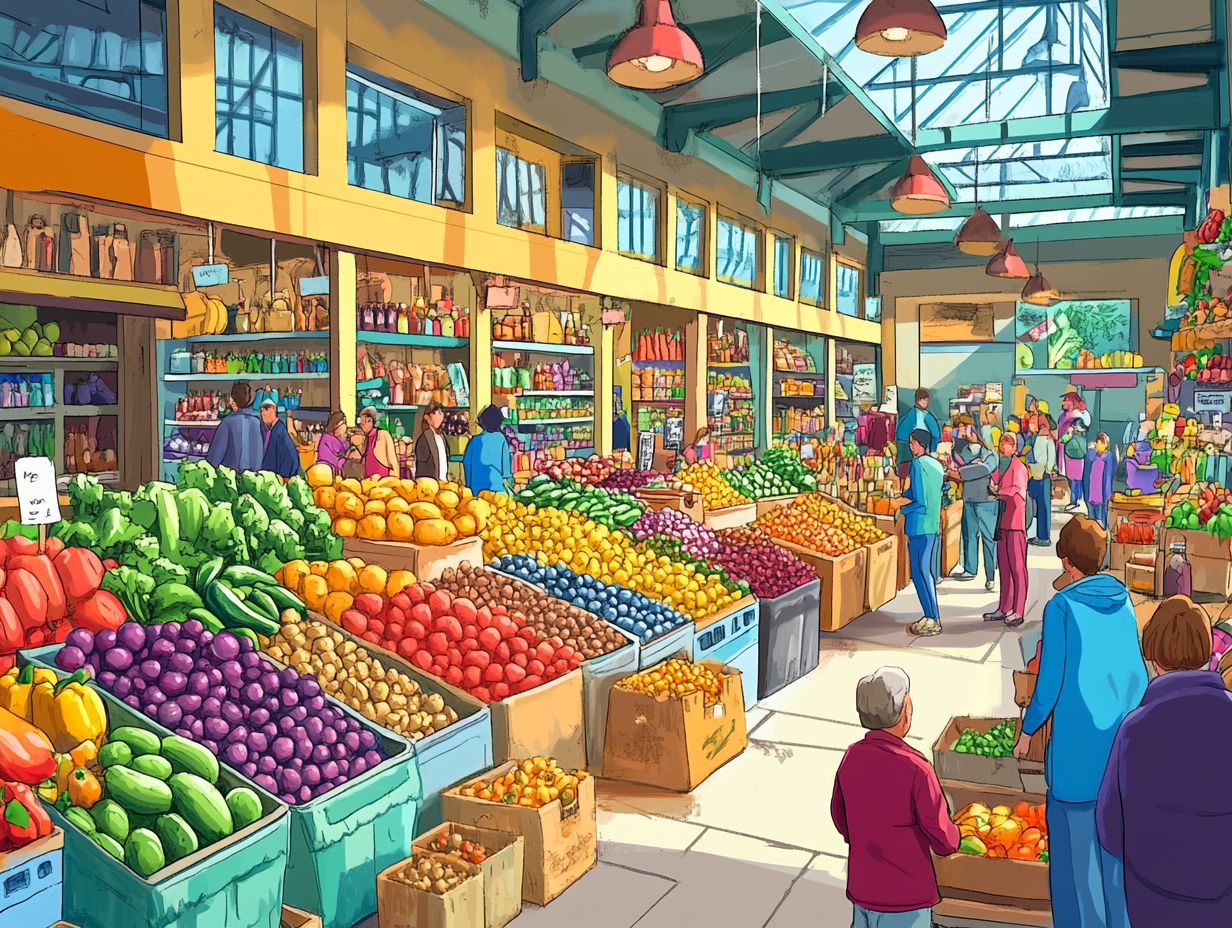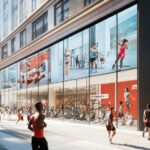Farmer’s markets serve as vibrant hubs for local produce, community spirit, and visitor engagement; however, the layout of these markets can greatly impact sales, customer satisfaction, and market flow. This article delves into how thoughtful market layout designs, tailored to accommodate foot traffic and pedestrian movement, can enhance the shopping experience and promote vendor success. We will explore effective tools for gathering consumer insights, examine key factors for creating optimal market layouts, and share real-world success stories. Additionally, we will provide practical tips to help vendors and market managers implement changes that resonate with both customers and sellers, improving vendor performance and customer engagement. Join us as we uncover the transformative power of intelligent farmer’s market layouts!
The Importance of Farmer’s Market Layouts

The layout of a farmer’s market is crucial to its overall success, influencing factors such as foot traffic, vendor sales, vendor arrangement, and customer experience. A well-designed layout can enhance product visibility, increase sales, improve stall placement, and foster shopper engagement, ultimately creating a vibrant community hub.
To effectively arrange a market, organizers must carefully analyze foot traffic patterns and understand consumer preferences. By leveraging this information, including spatial analysis and traffic analysis, they can establish a spatial arrangement that meets these objectives.
For instance, placing an ice cream vendor near the entrance can draw in families with children. An effective layout can also encourage interaction between customers and vendors, thereby improving vendor sales performance and optimizing market accessibility.
Making thoughtful adjustments to the design and layout of a farmer’s market can significantly enhance community engagement, improve traffic flow, and leave a lasting impression on shoppers.
Impact on Sales and Customer Experience
The impact of market layouts on sales and customer experience is significant, as effective designs greatly influence shopper behavior and engagement. A well-designed layout enhances product visibility, improving the shopping experience and encouraging increased interaction with vendors.
As shoppers navigate the market, the flow and organization of the space can impact their purchasing decisions, ultimately affecting sales performance. Key elements, such as market zones and optimal vendor placement, guide potential buyers through high-foot-traffic areas, increasing exposure to specific products and vendors.
For instance, placing highly sought-after products near the entrance can attract buyer interest and stimulate impulse purchases. Recent consumer behavior metrics indicate that shoppers are increasingly influenced by vendor visibility and accessibility, favoring interactive environments that promote relationships, foster brand loyalty, and enhance the overall customer journey.
This trend is corroborated by sales performance metrics, which show that effective vendor interactions not only drive immediate sales but also encourage repeat visits, highlighting the importance of the customer journey and consumer loyalty in overall sales performance.
Understanding Foot Traffic Insights

Understanding foot traffic insights, visitor patterns, and consumer preferences is essential for optimizing farmer’s market layouts and ensuring they meet the needs of both vendors and customers.
By analyzing traffic patterns and gathering data on consumer behavior and neighborhood demographics, market organizers can identify peak times, popular areas, and shopper demographics. This information enables them to tailor the market experience effectively.
A data-driven approach not only enhances sales optimization and occupancy rates but also improves overall market accessibility, allowing shoppers to navigate the space easily and discover products.
Tools and Techniques for Gathering Data
The use of various tools and techniques to collect data on foot traffic, including digital tools and data analytics, is crucial for effective market optimization and strategic planning.
Foot traffic analysis, surveys, mobile tracking, and technology-driven solutions for gathering consumer insights can inform layout decisions and manage traffic effectively. This data-driven approach enables market organizers to implement optimization techniques that enhance shopper engagement, improve operational efficiency, and streamline overall market operations.
For instance, heat mapping technology and interactive maps can reveal where customers tend to spend their time, allowing businesses to make more effective product placements and improve space utilization.
One notable case study involved a retail chain that utilized beacon technology to send targeted promotions to customers based on their movements within the store, resulting in a 20% increase in unplanned purchases.
By leveraging such tools, market operators can enhance the shopping experience, improve operational efficiencies, and ultimately boost overall market performance, customer satisfaction, and market sustainability.
Using Foot Traffic Insights to Optimize Layouts

Insights derived from foot traffic analysis and market research can be leveraged to optimize the layout of farmers’ markets, ultimately enhancing shopper behavior and improving sales performance.
By examining traffic patterns and analyzing shopper preferences, market organizers can make informed decisions regarding vendor placement, layout design, and vendor rotation, which can foster vendor collaboration and enhance the overall customer experience.
Additionally, considering seasonal trends, seasonal layout adjustments, and demographic analysis is essential for determining the necessary layout changes.
Key Factors to Consider
When optimizing layouts using foot traffic insights, several key factors must be considered to ensure layout efficiency and improve crowd flow: market accessibility, vendor performance, vendor diversity, and shopper engagement. These three elements are critical and can be measured and analyzed to assess their influence on overall market dynamics. An effective layout will integrate these variables to promote strong vendor performance while enhancing the shopping experience for customers.
To assess market accessibility, it is essential to evaluate how easily shoppers can access the space and navigate traffic hotspots. For instance, designing areas with wide walkways and clear paths can facilitate smoother traffic flow and reduce congestion.
Vendor performance can be evaluated through sales data and customer feedback, which provide insights into which vendors attract more foot traffic, engage shoppers effectively, and contribute to sales trends.
Shopper engagement can be assessed through surveys and observational studies, allowing planners to gather valuable insights into customer preferences and behaviors.
By optimizing layout designs to promote interaction and comfort, planners can significantly enhance the overall shopping experience and customer retention.
Case Studies and Success Stories

Case studies and success stories from farmers’ markets highlight the importance of effective market strategies, layout innovation, and layouts in helping vendors connect with customers. Factors such as product distribution patterns, vendor collaboration, and shopper behavior are explored in these case studies, demonstrating how they can influence layouts to boost sales, enhance customer experiences, and improve location optimization.
For example, the Midtown Farmers’ Market in Minneapolis increased sales by as much as 30% after relocating several popular vendors to the southern end of the market, taking into account consumer demographics and neighborhood attractions. Following the opening of a new bus line at that end, market managers observed a significant rise in foot traffic and aimed to make navigation easier for shoppers. By moving popular vendors to this area, they facilitated cross-selling among vendors, as shoppers could more easily find and purchase complementary products together, improving both vendor collaboration and buyer behavior.
Another example is the Downtown Market in Grand Rapids, Michigan. In response to customer feedback, the market underwent a redesign that included the addition of open spaces for socializing. After the redesign, they recorded a 25% increase in repeat visitors, effectively illustrating how changes in layout and market segmentation can enhance shopper engagement and overall sales performance.
Practical Tips for Implementing Changes
Vendors should be actively involved in the process of changing layouts to optimize market configurations and event planning. This engagement requires effective communication, collaboration with vendors, and understanding of consumer anthropology.
By involving vendors in the layout design process, organizers can ensure that the layouts meet their needs while also gaining valuable insights that can enhance market operations, improve the shopping experience, and increase customer attraction.
Strong vendor relationships are essential for the success of markets, and utilizing engagement strategies such as focus groups, surveys, and community feedback mechanisms can assist market organizers in making informed decisions. This approach also facilitates smoother implementation of layout changes.
Communication with Vendors and Customers
Effective communication with vendors and customers is essential for successfully implementing changes in market layout, fostering community engagement, and improving user experience. By employing appropriate communication strategies and marketing strategies, organizers can gather valuable feedback from the community, which can inform layout modifications, event scheduling, and encourage collaboration among vendors.
Ensuring that both vendors and shoppers feel heard is crucial in creating a market ecosystem where both parties can benefit from operational and layout improvements, including signage placement and experiential marketing. To achieve this, utilizing a variety of communication methods—such as surveys, feedback forms, and regular meetings—can significantly enhance the understanding of the needs and preferences of both groups.
Surveys enable organizers to gauge customer satisfaction and track evolving shopping trends, while regular meetings with vendors foster open communication, customer feedback, and a sense of community between organizers and vendors. This open dialogue facilitates the exchange of ideas and innovative solutions, allowing for necessary adjustments to accommodate the ever-changing nature of markets, including layout simulation and crowd dynamics.
Ultimately, community feedback not only shapes the effective design of the market layout, including layout testing and consumer insights, but also enhances the overall shopping experience.






